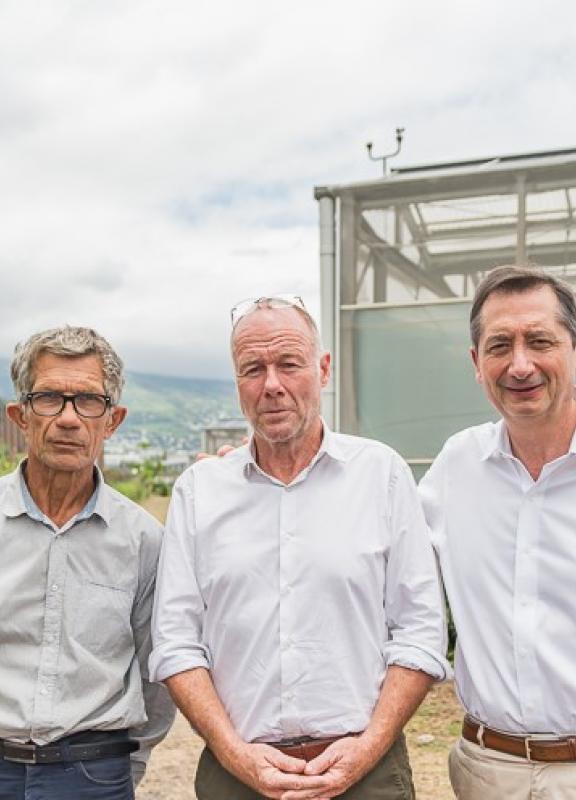Agrivoltaics: 15 years of experience in Reunion have led to the creation of a segment that is establishing itself in Europe
Saint-Denis de La Réunion, France, Wednesday February 7, 2024 - Agrivoltaics emerged on the French island of Reunion 15 years ago. Since then, the experience accumulated in Reunion has been replicated across Europe. To mark this fifteenth anniversary, renewable energy producer and agrivoltaics pioneer Akuo brought together players involved in this sector in Reunion to discuss the future of this segment.
The event was held on the premises of the Le Port detention facility, under the cyclone-proof agrivoltaic greenhouses of Akuo’s visionary and emblematic Bardzour project. A market gardening activity there combines solar production and a social rehabilitation program where inmates are taught about agroecology.
The first agrivoltaic facility, combining agricultural production and solar energy production, saw the light of day in Pierrefonds at the end of 2009. Since then, more than 20 such projects have taken shape within the Akuo Group, in Reunion, Mayotte, the French West Indies, New Caledonia and mainland France, with a total installed capacity in excess of 150 MWp.
Agrivoltaics in Reunion: 15 years of protection from the vicissitudes of the weather
The island of Réunion has developed an ecosystem resilient to extreme weather phenomena (cyclones, storms and drought) that is a source of inspiration for regions affected by the consequences of climate change. Time and again, the cyclone-proof greenhouses have proven their usefulness, efficiently protecting harvests from extreme weather. On the island of Reunion, since the first greenhouses were erected in 2011, all the crops have thus been preserved, including when cyclone Belal recently hit the island.
Higher yields and an additional source of revenue for farmers
Optimization of light, cyclone-proof greenhouses, trackers, water-management system... over the last 15 years, the model has continually evolved, the technological solutions have been refined to suit the specific characteristics of the agricultural land, geographical regions, crop requirements, work and exchanges hand in hand with farmers. The R&D investments undertaken by the Akuo Group now enable models to be developed that optimize the brightness under the structures. Steering tools have been developed to control water stress via a mechanism that collects excess rainfall, stores it and redistributes it via a drip or micro-sprinkler system. The one thing that hasn’t changed is Akuo’s long-term commitment to work alongside farmers and support their development, from seed to plate. In exchange for the installation of panels via emphyteutic leases, the farmers receive additional income.
“Thanks to the photovoltaic greenhouses, all the rooftop water is recuperated and reused on the crops. This represents 9m3 (i.e. 2.4 thousand gallons) in daily water savings. Multiply that by 30 days, and you get substantial monthly savings”, said Jean Bernard Gonthier, a farmer in Saint-Joseph.
The future of agrivoltaics: eagerly expected decrees
The Law on the Acceleration of Renewable Energy Production adopted in March 2023 establishes, for the first time, a legal framework for agrivoltaics. The implementation decrees that are still pending will enable the necessary safeguards and guarantees to be put in place, requiring facilities to maintain agricultural yields and provide a dual service: protection from extreme weather events and adaptation to the effects of climate change. These announcements must be based on regional reality enabling these types of projects to be accelerated and generalized.
“The future of agrivoltaics depends on the legal framework that must be organized around this segment. Today, legislation has to be put in place that encompasses all geographies but can also be adapted to each region and to each farmer’s characteristics. This is a crucial premise if agrivoltaics technologies are to continue supporting the agricultural transition and if this is to continue being a win-win partnership for farmers, energy producers and our planet”, added Akuo’s Chairman and co-founder Eric Scotto.
